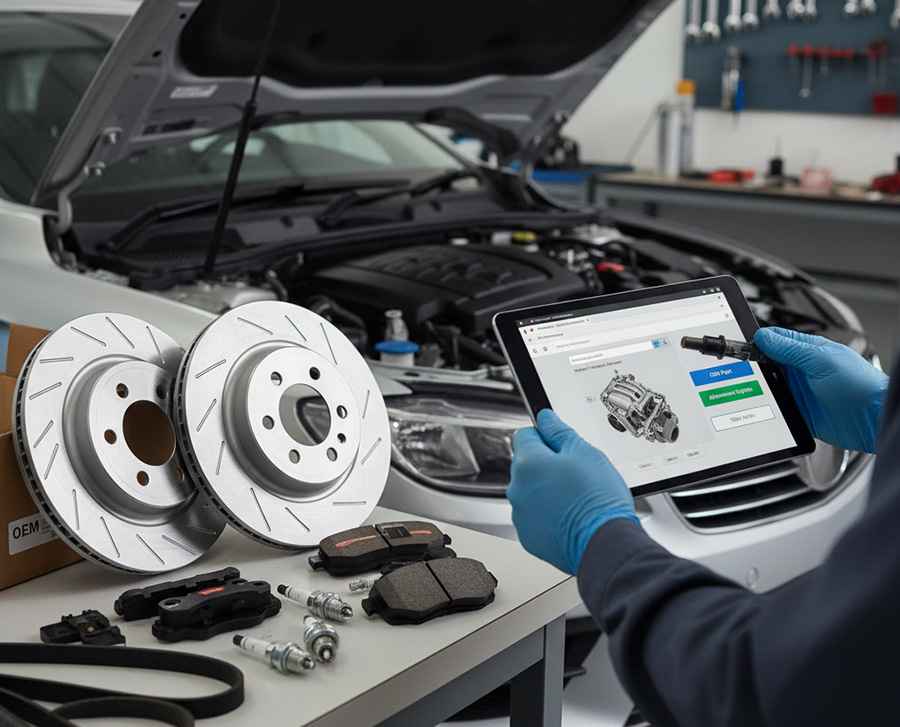How to Ensure the Right Replacement Parts Match Your Car’s Make and Model
Tracking down the correct component for your car is not always straightforward. With so many parts available across different years, trims, and engine types, the search can quickly turn overwhelming. Be it replacing a worn-out brake pad or a more complex engine component, the key is making sure the part truly suits your vehicle.

Knowing how to narrow your options, confirm accuracy, and source reliable car replacement parts can make the whole process far less daunting.
Why Compatibility Has a Direct Impact on Performance and Safety
Every vehicle is built to exact specifications, and those details matter more than most people realise. Even a minor variation between models can change how a part fits or functions. Install something that is not a perfect match, and you risk poor performance, safety concerns, or even voiding your warranty.
Modern cars rely on interconnected systems, meaning a small component can affect how others behave. For example, using the wrong sensor or brake component does not just limit efficiency but can also create a knock-on effect across the system.
Identifying Your Vehicle Goes Beyond Make and Model
Most drivers know their car’s brand and model, but that is only the starting point. Factors such as the year of manufacture, engine type, and trim level all influence which parts are compatible. Overlooking one of these details could leave you with a part that looks right but won’t fit properly.
One of the most reliable tools for avoiding that mistake is the Vehicle Identification Number, or VIN. This 17-character code contains specific information about the vehicle, from the engine type to the production plant. Many reputable suppliers now allow you to enter your VIN when searching for parts, which is a far more precise approach than guessing from a drop-down menu.
Balancing the Choice Between OEM and Aftermarket Options
Once you have identified your vehicle’s details, the next step is deciding between OEM (original equipment manufacturer) parts and aftermarket alternatives. OEM parts come directly from the same manufacturer that built your car’s original components, so fit and function are guaranteed. They tend to be pricier, but for critical systems like engines or brakes, they’re often the safest choice.
Aftermarket parts, made by third-party companies, can offer real value. Many are high-quality and available at lower prices, but standards can vary.
Choosing Reliable Suppliers Makes the Process Smoother
Not every catalogue or website offers the same level of accuracy. If you are shopping online, look for platforms with detailed filtering tools and the ability to cross-check parts against your VIN. A strong database, backed by responsive customer service, removes much of the uncertainty.
Websites dedicated to replacement parts often provide clearer categorisation, part numbers, and compatibility checks than general retailers. That level of detail reduces the chance of ordering something unsuitable.
Avoiding the Most Common Mistakes During Parts Selection
Two parts may look almost identical, but appearances can be misleading. Specifications can differ just enough to make one unsuitable for your car. Another pitfall is relying on old catalogues or generic descriptions that don’t account for mid-year updates or trim variations.
Whenever possible, compare part numbers. Cross-referencing the original with the new one is one of the simplest ways to confirm a proper match. And if you are unsure, there is no harm in asking for guidance from an experienced mechanic or the supplier’s support team.
Takeaways
Getting the right part for your car is not complicated once you know what to look for. However, it does require attention to detail. By properly identifying your vehicle, weighing OEM against aftermarket, and using reputable suppliers, you save yourself wasted time, unnecessary returns, and potential repair costs.
That said, approach the process carefully the first time, and you will keep your car running smoothly and safely for many kilometres to come.